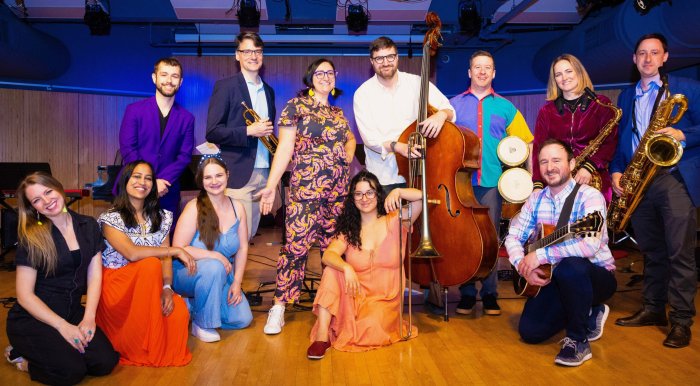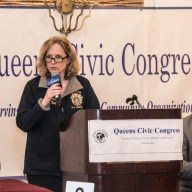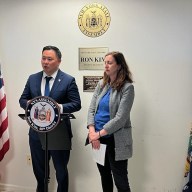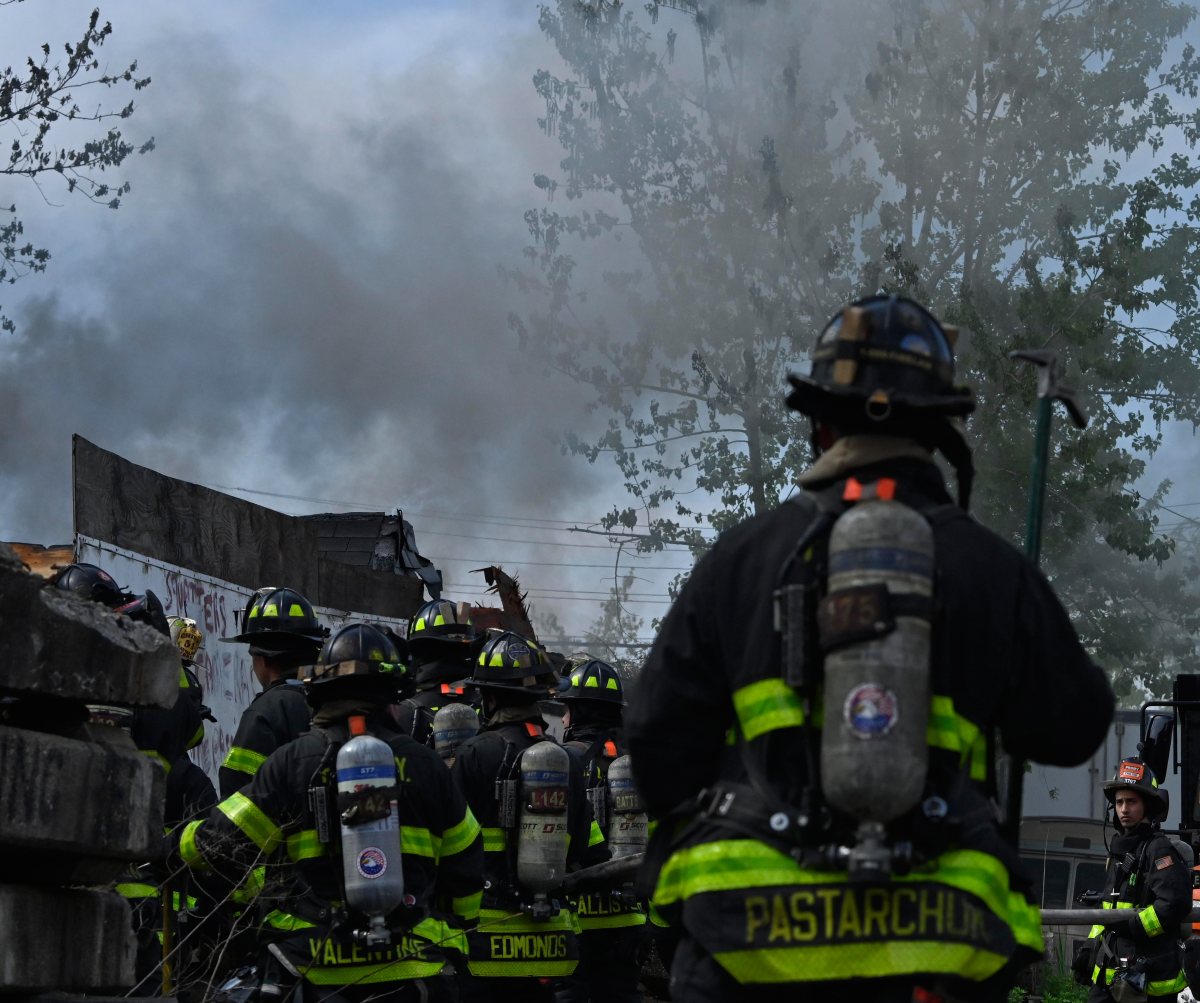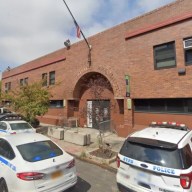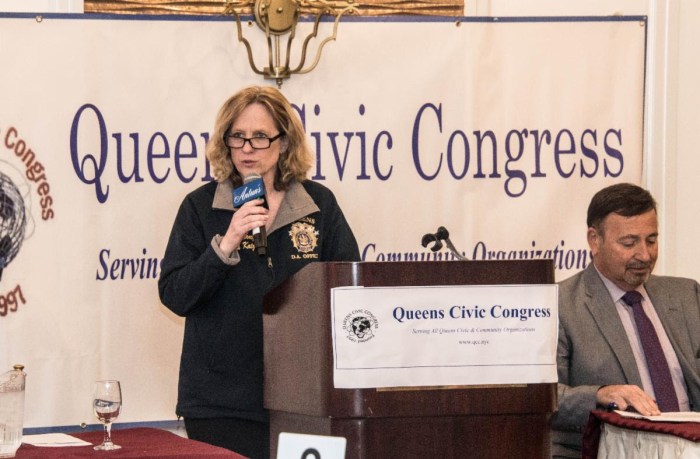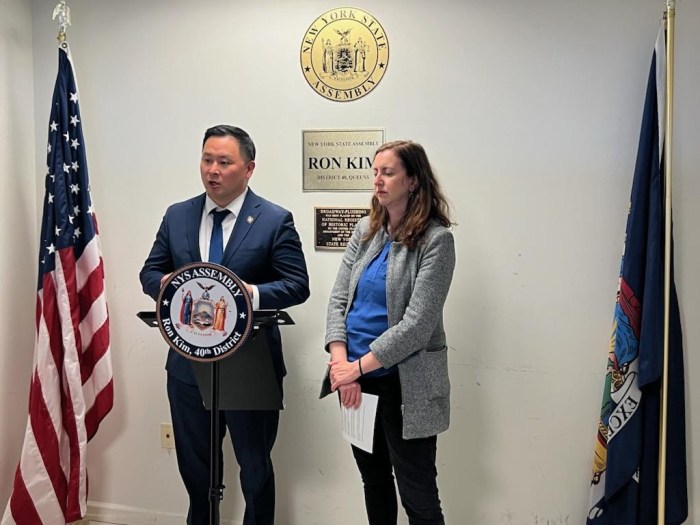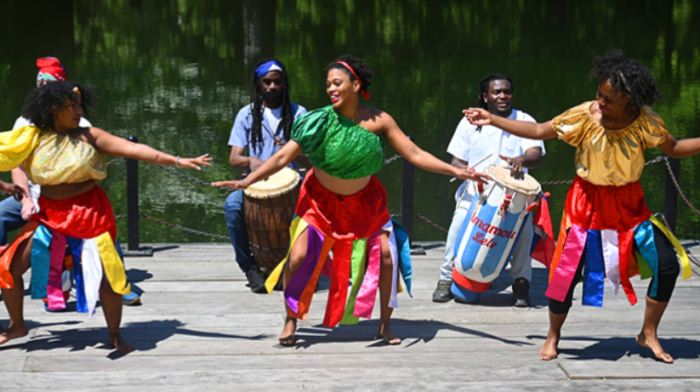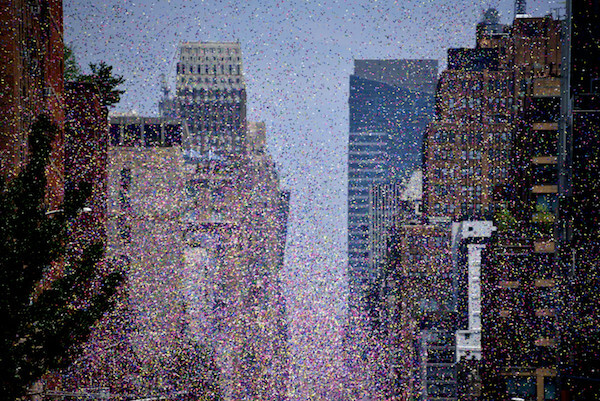By Arlene McKanic
For those of us who are discouraged by the soulless glass and metal boxes that are erupting like carbuncles all over Queens, it is refreshing to know that architecture in the borough wasn’t always ugly.
“The Twentieth Century Borough: One Hundred Years of Modern Architecture in Queens” at the Queens Historical Society shows photo after photo of the elegant construction that came to replace some of Queens’ forests, farmlands and fens.
The exhibit is separated into four parts: 1900 – World War I, 1920 – World War II, 1945-1975 and 1975 to 2000. From the first part there’s a tinted postcard of the brooding and beautiful Hell’s Gate Bridge from 1910 and a photo of industrial lofts going up in Long Island City from the same period. Another photo shows the Interborough viaduct stretching across a scoured Long Island City countryside. There are architectural plans and photos of the construction of Forest Hills Gardens, and a shot of a muddy country road in Elmhurst that turns out to be Queens Boulevard, also taken in 1910.
The second part of the exhibit is represented by a shot of LaGuardia Airport’s main terminal, built between 1937 and 1940, and the gorgeous Art Deco interior of the Marine Air Terminal.
Indeed, the viewer can only think that Queens must be the most Art Deco, streamlined place in the United States, for it seems every structure built in that second period was not only functional but glossy and beautiful. The plans for urbanizing Queens, whose population grew 130 percent in the 1920s, were based on the ideas from the Regional Plan Association and Robert Moses, the “evil genius” Parks Commissioner from 1924 to 1968. Even the highways were beautiful: check out the rustic stonework in the bridges of the three level interchange of the Belt/Whitestone Parkway. Even a photo of the toll plaza and lighting pylon of the brand new Triborough Bridge has a sleek, kitschy loveliness straight out of Buck Rogers.
Of course there are photos and postcards of the two World’s Fairs. (The motto of the 1939 fair was “World of Tomorrow,” and that of the ‘64 World’s Fair was “The World of Already.”) The centerpiece of the first fair, which rose out of an ash heap, was the Trylon and Perisphere, an obelisk and a globe, both gleaming white and featureless. There’s a nostalgia-inducing color shot of the New York State Pavilion at the 1964 World’s Fair, taken when it was full of tourists, and long before its iridescent glass ceiling was knocked out and it became a condominium for pigeons.
The period after World War II saw the building of the borough’s largest employer, Kennedy (nee Idlewild) Airport. LaGuardia was rebuilt for the jet age. Art Deco, alas, gave way to the international style, as well as such dubious styles as Populuxe, Structural Expressionism and Sculptural Expressionism. Examples of this are seen in photos of the New York Times Printing plant, a lofty gallery in the Queens Museum of Art with gleaming hardwood floors and track lighting, a garish courtyard of the Hall of Science whose vulgarity is leavened a bit by the dressing-screen-shaped hall, the new control tower at JFK and the bottle glass-weirdness of the Flushing Regional Library. There is the TWA terminal, whose creator was the great Finnish architect Eero Saarinen. Though the exterior has always looked like the face of a monstrous cicada head on, its interior is revealed as a coolly beautiful, lime washed, light-filled cavern. Nearby is a photo of the Pan Am Terminal, with its roof resembling a permanently docked flying saucer.
Photos document the morphing of the Fresh Meadows Country club into an apartment complex. Fortunately, the planners and architects, Voorhees, Walker, Foley and Smith, were mindful of the need for greenery as the planners and architects of today are not. Only 15 percent of the site was comprised of buildings.
Another series of photos documents the building of LeFrak City, 20 16-story buildings grouped in five groups of four set at right angles and joined by one pavilion-like glazed lobby. The project was developed between 1960 and 1967. There’s an interesting and funny promotional shot done of the lower floors of a building whose concrete has just been poured. Among the empty spaces of raw concrete, models read women’s magazines on sofas and easy chairs, cook dinner and tend to their children. Interestingly, Rochdale Village, the second largest co-op in the world, built on the sight of the Jamaica racetrack around the same time as LeFrak City and within spitting distance of JFK, isn’t included in this otherwise worthy exhibit.
“Twentieth Century Borough” will be at the Queens Historical Society/Kingsland Homestead at 143-35 37th Avenue in Flushing through March 3, 2003.





